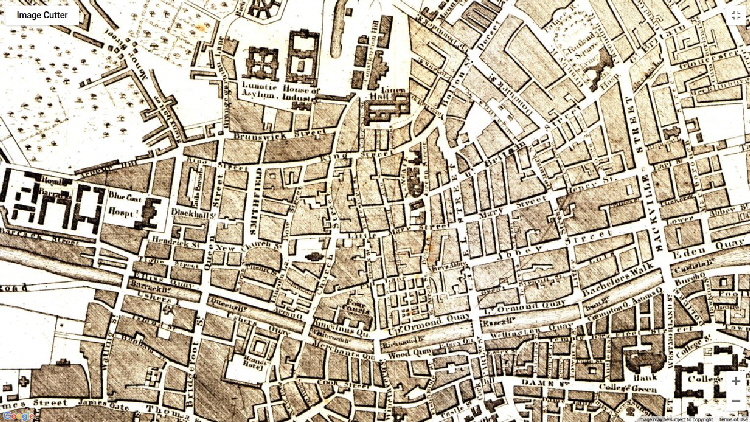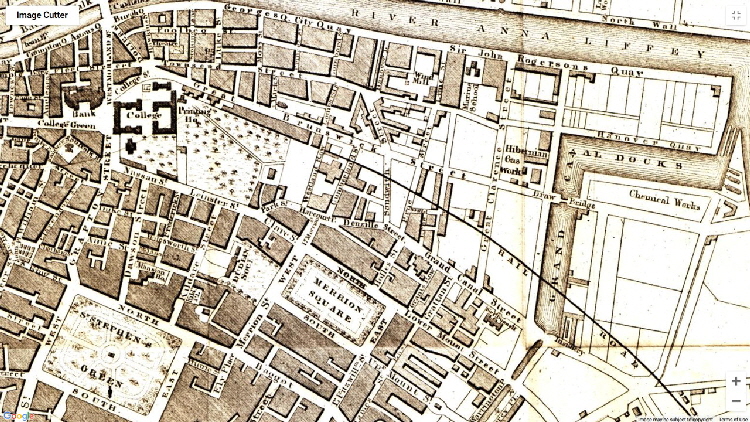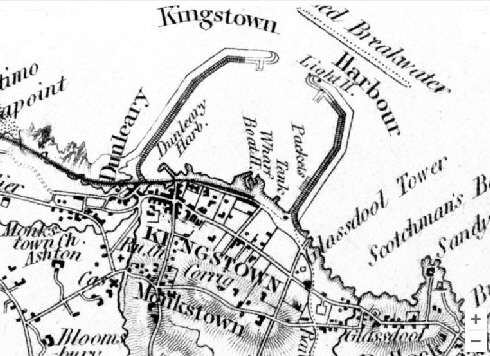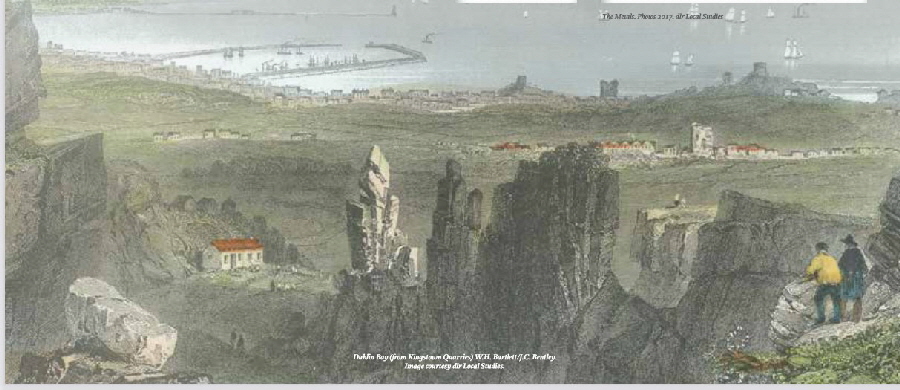Dublin
Dublin would have been a shock to the country Irish serfs entering. Its scale and fine buildings would have left those unfamiliar with such wealth in a state of awe, at least initially. But they would soon have learned that underneath its veneer of finery, raw capitalism was still at work. To survive, they would not only have to find food and shelter, but would have to fend off those more than willing to exploit the unwary. A wrong move might risk the loss of everything. Dublin was not a destination for most, it was a stopover point, a brief pause on a journey to a better life in England or America.
Kingstown Port
Kingstown port was the the main route of exit for the tens of thousands of would-be emigrants. A railway from Dublin to the port had been constructed in 1834, though only the wealthier would use it. Emigres from the West Coast would not have used their meagre funds on rail transit. After all, having walked across Ireland, what difference would a few more miles make? They would have walked.
Liverpool, with its enhanced routes to America and lower costs, would have been the choice for most impoverished emigrants. Tickets might be purchased for paddle steamer sailings to Liverpool later the same day, or the next. Depending on the weather, a ship might dock in Liverpool with only five or six hours transit, longer if conditions were less amenable. The ships themselves would carry a mix of people, livestock, and mail.







Source: old map prints
Source: old print
Source: old print
Source: old map prints